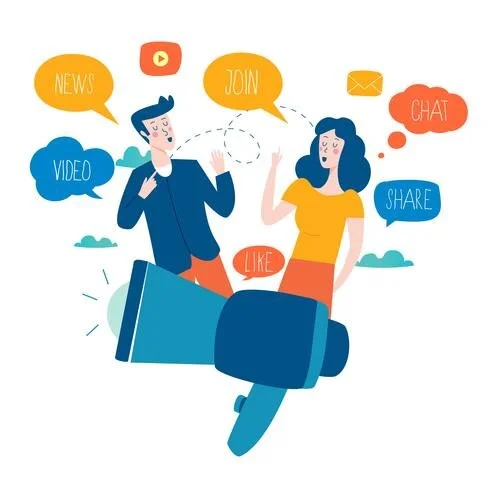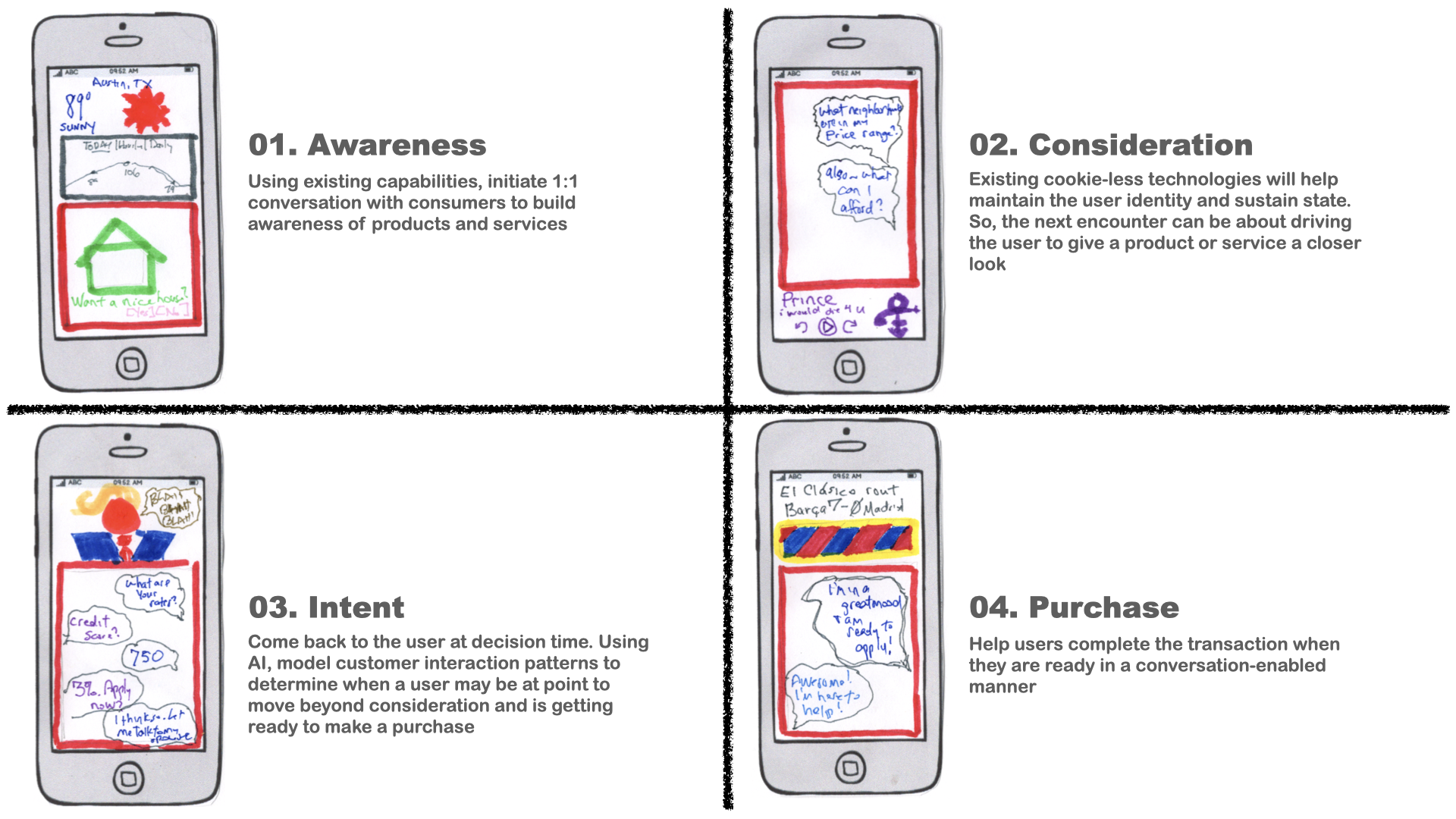
Let’s talk.
Ad units that create 1:1 dialogue with consumers have already proven that they increase customer engagement by 80%. The voice revolution is on. So, what happens when the unit can move seamlessly with the customer from text to audio and back?
What’s the state of conversational marketing today?
Building on an existing product and the Watson Assistant, I envisioned a future state of conversational marketing that takes advantage of ambient computing and anywhere connectivity. But, if you need a primer, below is a brief description of the current state of conversational marketing and how it works.
What it is.
Powered by The Watson Assistant, IBM created a chatbot advertising product. Like Siri or Alexa, it' uses NLP to identify user input. And, like Google, it ranks and orders potential responses. The bot can be trained to respond within a chat window to any user input.
What it does.
Primarily, the unit educates a user and answers questions about products and services. It can also make recommendations tailored to a user’s preferences. On average, users will spend 1 - 2 minutes engaging with this type of ad. It increases recall by 80% and increases unaided awareness by 20%.
Why it works.
Conversational interfaces are increasing in popularity. Chatbots like Eno for Capital One have been big successes. And, smart speakers might be the most rapidly adopted consumer technology in human history. Conversational marketing tools have connected brands and customers in the most human possible. But, there’s room for this technology to evolve.
Conversation that carries on.
It’s a reboot of sequential marketing. Instead of seeing that sweater I look at on Thursday again.. and again, and again. The value is in creating an engaging conversational experience that that moves with the user across applications and through the purchase funnel.
When might this work?
I approach advertising from this perspective: I hate advertising.
But, recognizing the importance of ad revenue plays in keeping the internet open and free, I asked myself: are at leastsome situations where advertising would be useful? And, are there times I might welcome a marketing message?
I did some research and identified cases and personas around expensive or possibly life-changing purchases. Like, shopping for a mortgage or buying a car.
Meet Jonathan.
34 years-old and living with a partner. Someone in this stage of life might be thinking of putting down roots and might want to purchase a home.
Mortgage lending can feel opaque, and, with all the factors that go into making the right decision and getting a good deal.
Maybe, he feels informed or at least semi-informed about the process. Maybe, he wants to talk to someone to understand what he doesn’t know with out the pressure to apply immediately.
The financial crisis of 2008 and the recent economic downtown with Covid give him pause. He’s suspicious of lenders who might not offer the best solution for him and his partner.
Meet Sophie.
27 years-old, and living it up in those first years out of school!
She’s aware of all the adulting she does now. And, she thinks a lot about health, and how she’s always eating out. And, she’s concerned about the environment.
Maybe she thinks it’s time to buy a grown-up car. Maybe she wants to get something she thinks she’ll really like and something that isn’t a gas guzzler that’s going to single-handedly destroy the planet.
Sophie hasn’t done a ton of research, but she wants a way to better understand everything, without having to sort through a bunch of jargon.
Considered here, another conversation carried on with the same user, across the purchase funnel. Here, the messages delivered in both and chat and audio. It’s not a stretch to think that this third representation could be driven by a video ad.






